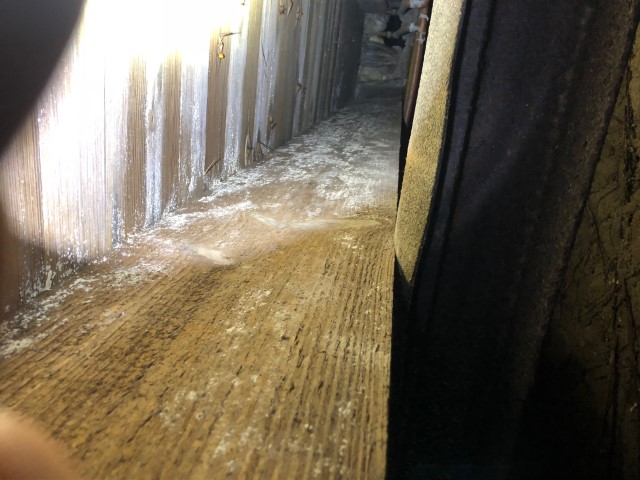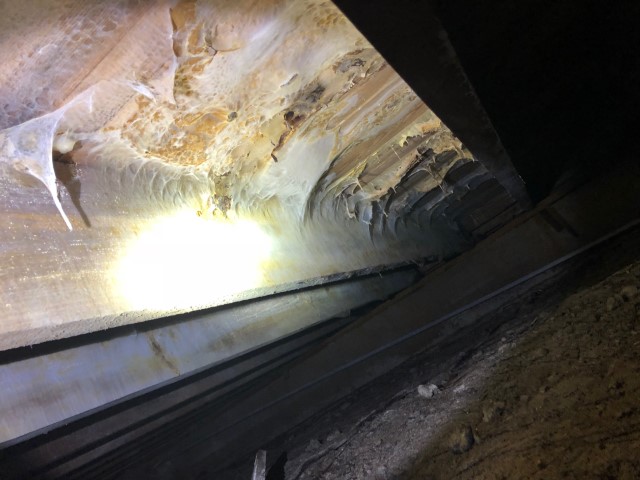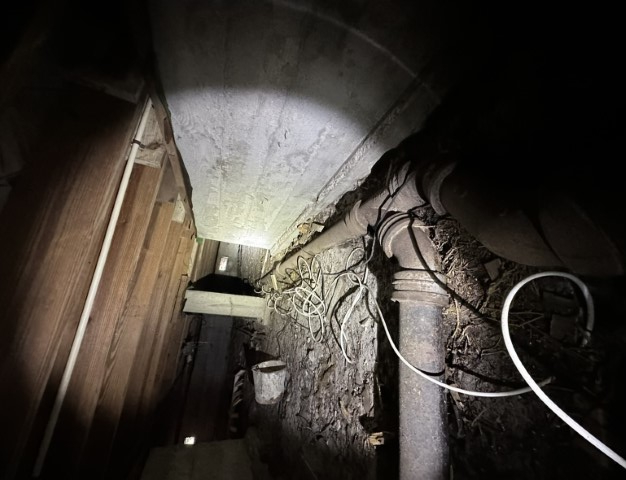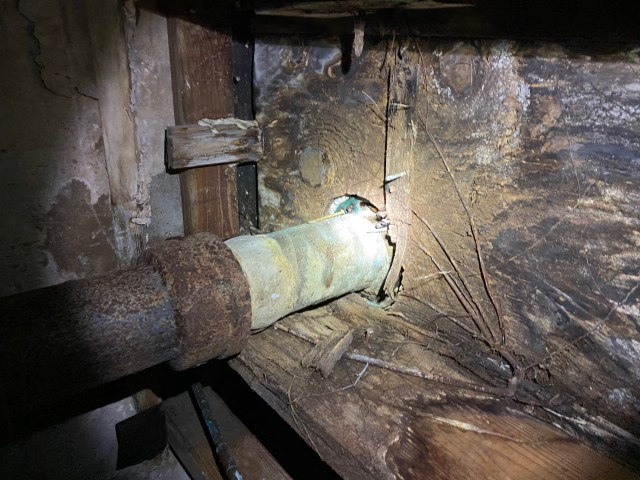Professional Mold Remediation Services
Don't Let Toxic Mold Put Your Family's Health at Risk
Stop mold damage before it spreads. Call now for a free, no-obligation estimate from a local remediation expert.
Free Estimate · Zero Obligation · Available 24/7
How to Remove Mold In a Crawl Space
Crawl spaces are one of the most common areas where mold growth is likely in many homes.
It’s a rare occasion to find property owners peeking into their crawlspaces to try and see what’s happening in these areas. It means that, in some cases, you will likely find significant mold infestation, which has gone unnoticed for quite some time.
But what exactly causes mold in crawl spaces? Does this mean there is a mold problem in the home? How is crawl space mold removal done?
These are all questions we will answer as well as how mold can be prevented underneath the home.
Why Does Mold Grow In A Crawl Space?

The crawl space is, without a doubt, the most conducive and convenient area where mold flourishes quite easily. Since mold doesn’t need sunlight to grow, it tends to opt for this moist, dark area. Because what area is darker than underneath the home?
Before having crawl space mold removal done it’s important to know what causes it.
Here are some contributing factors to crawlspace mold growth in crawl spaces:
High Humidity
Crawl spaces usually experience rising humidity levels, and mold requires moisture to grow and flourish. When the relative humidity goes above 60%, there’s likely a high chance for mold growth. The risk increases BIG TIME when the relative humidity goes beyond 80% which is typical in an area with less ventilation such as under a home. Humid crawl space creates a breeding ground for mold spores.
Ventilation
When constructing a house, building codes require owners to have adequate ventilation in their crawl spaces and utilize the outside air as the primary source to control moisture. However, too much ventilation in the crawl space can worsen a mold problem. This is because the air in the crawl space is, in most cases, cooler than the air coming from the outside.
The problem worsens during the summer/warmer when constant warm air flows into the cool, ventilated crawl space. When the cool air in the crawl space comes into contact with the outside, warm moist air, cooling the warm air occurs, releasing moisture through condensation. This continuous source of moisture, combined with high humidity levels in the crawl space, creates an ideal environment for mold to grow.
Pest Infestation
Pests love invading the home through the crawl space. Once these pests gain access to your house, they leave the crawl space in rough shape. A damaged crawl space easily allows rainwater to get through it. In the end, this could welcome molds since moisture is a major contributing factor to mold growth.
Flooding
The most obvious cause of crawl space mold is water. If there is excess moisture under the home from flooding there is a high probability that organic materials including floor joists will have visible mold. Having floor boards with excessive water damage can lead to musty smells that can affect indoor air quality along with affecting the home’s structural integrity.
Plumbing Leaks
Water damage can also occur from plumbing leaks under the home. A mold remediation specialist may find it difficult to work around the plumbing equipment when removing mold in the crawl space.
How to Remove Mold in a Crawl Space

Now that you understand the major causes of mold in crawl spaces and some of the dangers they pose, it’s time to look at mold removal from crawl spaces. Here are six crucial steps mold remediation professionals use to eliminate these mold spores.
Proper personal protective equipment such as goggles, a Tyvek suit, and gloves must be used when going under the floor joists.
These steps are assuming it’s even possible to get under the home. Not every home will have access under the foundation walls. It may be necessary to remove some of the floorings in order to properly get rid of mold in crawl spaces. An engineer may need to be consulted.
This is not considered a DIY project and mold issues should be resolved by a licensed mold remediation company.

1. Conduct an Assessment of the Situation At Hand
The first step in crawl space mold remediation incorporates setting lights and laying down plastic sheeting that will catch mold as you clean it from the surfaces. Determine if any of the floor joists or floorboards have rotted wood that will need to be removed. Plastic sheeting should also be replaced along the flooring inside the home to prevent any cross-contamination that can come through the crawl space.
2. Clean or Remove the Affected Areas
After assessing the situation and making all necessary preparations, the professional should start with mold cleanup. Crawl space mold can be difficult to resolve but the licensed contractor can typically resolve the mold problems with cleaning agents. Aftering the anti-fungal solution is applied the mold growing can be scrubbed with a bristled brush or sander. This should be at the full disclosure of the contractor as each mold issue is different.
3. Dispose of Everything
Fold your plastic sheets carefully and seal them appropriately in a trash bag. Also, remember to dispose of the brushes, protective gear, and other items you used to prevent contamination.
How to Prevent Mold in a Crawl Space
As they say, prevention is far much better than cure. Taking the necessary steps to ensure mold doesn’t invade your home from underneath at all costs will save you a lot of headaches and time.
Here are crucial tips you can practice in your home to prevent mold growth in a crawl space:
Be Sure To Avoid Water Build-Up At All Costs
As mentioned earlier, molds flourish in moist environments. Keeping underneath your home as dry as possible will prevent the perfect environment for mold growth. Installing drains, gutters, or any other mechanism that can push water away from the home can help prevent moisture problem.
Use Mechanical Factors To Protect the Crawl Space
Getting some kind of mechanical fan or dehumidification system under the home can remove moisture and keep the fresh air moving. Additionally, insulating the crawl space with foam insulation may also be ideal. A licensed contractor should be consulted to determine if the floor joists can be protected using these systems.
Consider Regular Inspections
Scheduling for regular crawl space inspections will always ensure to catch potential problems as they arise and mitigate them as early as possible. For this case, be sure to regularly hire a professional inspector to check your crawl space regularly. If any urgent repairs arise, ensure you take care of them immediately.
Keep a Close Eye on Your Monthly Utility Bills
If you suspect unusually high utility bills, it could indicate you’re experiencing a leak somewhere. If this is the case, carefully investigate the matter, as it can assist you in preventing a bigger problem from occurring.

Wrapping Up
Here’s something that you need to know:
Your crawl space has mold. And it’s not just your crawl space. Everyone has mold. It’s possible to prevent mold growth under the home. It’s just a matter of:
- How much mold is present?
- Is the mold caused by water damage?
- Is the mold affecting the living space?
The air quality in the home can be tested to determine if you are breathing in the mold spores that are penetrating the home from underneath.
An odor may be present in older homes where there is a crawl space but that doesn’t always mean there is mold.
When in doubt, consult with a professional!
Explore Related Topics:
Notice an update we should make?
We strive for accuracy. Contact us here if you see incorrect or outdated info on this page.

